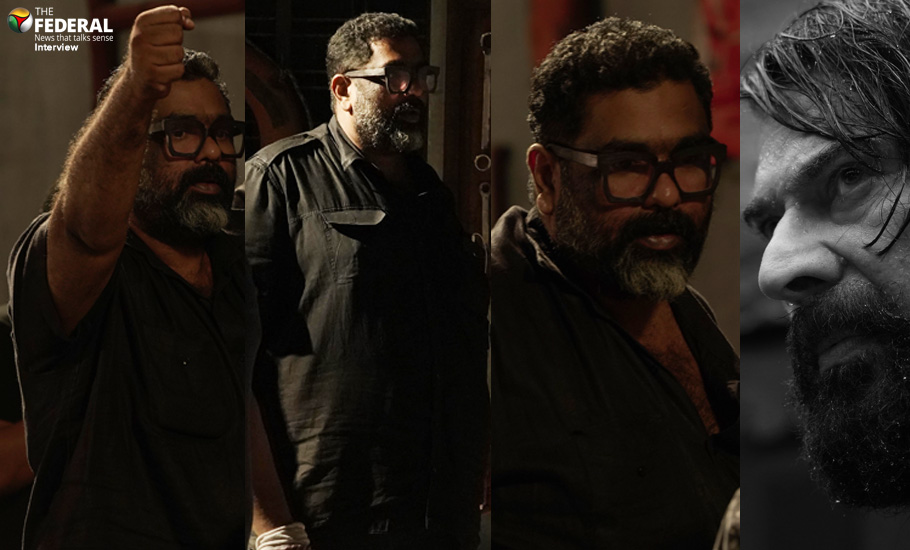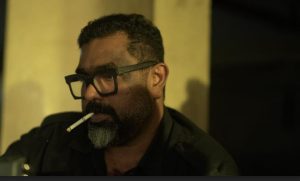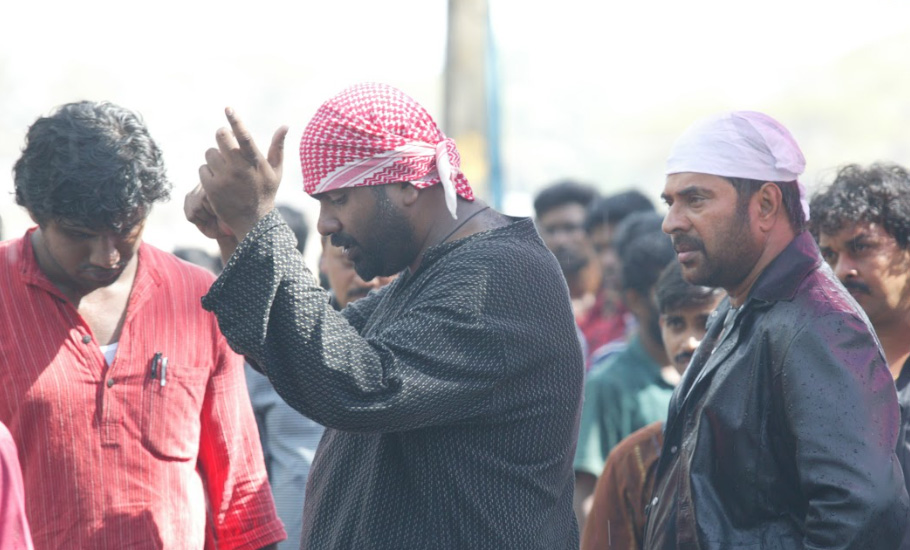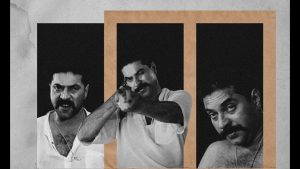
The Amal Neerad interview: On Mammootty, Bheeshma Parvam and Bilal
The Malayalam filmmaker talks about how he pulled off Bheeshma Parvam during COVID, his long association with Mammootty, and the best performances of the veteran actor

In Kochi, they say, there is history, or even geography, at every step. Taking a cue from his film characters, director Amal Neerad says Bilal’s Kochi is different from Michael’s Kochi, both roles played by Mammootty in Big B (2007) and Bheeshma Parvam (2022), respectively.
“Culturally, linguistically, there are many Kochis inside Kochi itself. The language you hear at Fort Kochi is different from what you hear at Palarivattom or even Kaloor. Such difference exists between Kumbalangi and Vypeen as well,” says Amal, sipping black coffee (almost Michael-ish) at his Kochi home, adorned with posters of Godfather and Pulp Fiction (prized possessions, hand-picked from Europe).
In more ways than one, the recently released Bheeshma Parvam, his biggest hit, has done to Mammootty what Joshiy’s New Delhi did in 1987 — smashing return to the box-office throne after a string of below-par outings. Amal (a little annoyed) refuses to draw any parallel, staving off such claims.
Unusually reticent (even chose to stay away from Bheeshma Parvam press conference and interviews ), there is a certain twinkle in his eye when Amal talks about his favourite things/people: be it Kochi, Idukki, Europe (where he studied), the Godfather series or Mammootty.
In the first of a two-part interview, Amal talks about his long association with Mammootty, how he pulled off Bheeshma Parvam during COVID, and his favourite performances of Mammukka (as the actor is affectionately called by many).
If Kochi is his muse, then Mammootty is his guardian angel.
Read on.
You have brought Mammootty back…
(Long pause) To begin with, I am not sure “if he has gone somewhere” for me to bring him back. It’s baffling how easily we tend to write off people with such a sheer body of work. I doubt if the current crop of filmmakers, including me, or even the next generation, is qualified enough to assess Mammootty as an actor or talk about his career graph. His body of work, or the filmography, itself is the proof of his stamp on the industry. For a career with such incredible longevity, such ups and downs happen. It has always been there. If it were not for me, someone else would have done it. It was imminent — the only question was when.
Also, it’s highly unfair to view Mammukka just through the box-office prism and quantify his career or even his stardom. Some of his performances are for the ages, and it needs multiple re-viewings to really know how powerfully he has played them. Sometimes, films and performances don’t get the recognition they deserve, but decades later, they do. Take Arapatta Kettiya Gramathil and Vidheyan, two of Mammootty’s most powerful performances, for instance — both did not do well at the box office. Another mediocre film may have done well then, and a talking point, THEN.
Arapatta Kettiya Gramathil, in particular, did not work commercially and that does not mean it was a bad film. So, such analysis pinpointing an extended drought or lean phase does not exactly apply to an actor like Mammootty.
What led to Bheeshma Parvam in such a quick time, that too during the pandemic? Mammootty was one of the most cautious (and responsible) actors when it came to COVID regulations…
We were busy executing the Big B sequel when the pandemic struck. In fact, we were about to hunt for locations, and significant portions were to be shot outside Kerala and abroad. Obviously, we could not have shot such a film during the lockdown or later, and that was when I started exploring different ideas.

Also Read: Mangaluru Days: Why Kannada director Raj B Shetty is the talk of the country
Having shared a few threads with Mammukka, we thought Bheeshma Parvam is the most feasible project. In fact, I shared a thread drawn from the Mahabharata and Godfather to him years ago, and he seemed excited then. With COVID still being (t)here, a relatively small film (to be) entirely shot in Kochi made sense.
You were all mentally and physically prepared for Bilal, and suddenly Bheeshma Parvam came in. How challenging was it to create a Michael (the character Mammootty plays) so different from Bilal, who is also from Kochi?
Yeah, it was a challenge, and that exactly was what made it more exciting as well. Being from Kochi, I know the city is much more diverse than what people think or even outsiders imagine. So, Bilal’s Kochi is not Michael’s Kochi per se. Culturally and linguistically, there are many Kochis inside Kochi itself. The language you hear at Fort Kochi is different from what you hear at Palarivattom or even Kaloor. Such difference exists between Kumbalanagi and Vypeen as well. All that separates them is sometimes just a strip of water.
Even the character traits of people are so starkly different, which is easy for a Kochi-ite to understand. So, obviously, such cultural, social differences exist between Bilal and Michael, which I was keen to explore. If Bilal speaks typical Fort Kochi dialect, then Michael speaks more of Kumbalangi and Kannamali.
Few have mastered dialects and their nuances like Mammootty has…
(That rare twinkle in the eye. Another long sip of black coffee) Totally. Execution becomes so easy when an actor like Mammootty, who has mastered the art of diction, plays these roles, and he probably knows the (language) intricacies more than I do. And when he renders certain dialogues, it becomes more beautiful, or more effective. For instance, the famous dialogue in Big B (“Kochi may not be the same Kochi, but Bilal is the same old Bilal”) is not exactly a dialogue that could sway the audience, like mass dialogues in popular films. So when he delivered it, it had that extra punch; so the guttens (technique) or the beauty lies in the modulation. The same goes with “Bombay/Jawo” dialogue in Bheeshma Parvam too.
Remember, Mammootty is not even from Kochi or Ernakulam district. Talking about language and its delivery, I don’t think any other actor can pull off such varied dialects as Mammootty does as we have seen in Vidheyan (Kasargod/South Canara) and Rajamanikyam (Kanyakumari-Trivandrum). These are just two diverse examples. Of course, we had the help of RJ Murukan (my old Maharajas friend) who was brought in as an additional dialogue writer.
Tell us about Chambikko… (perhaps, the most viral dialogue in Bheeshma Parvam).
Chambikko ..was a last-minute addition, moments before that scene was shot. It almost came as an after-thought, a spot dialogue inserted just to connect the sequences. It was a lingo widely used in Kochi and elsewhere in the 80s and 90s, and frankly, I was sceptical if people all across Kerala could connect with it or understand it, particularly because in Big B, one or two words did not work pan-Kerala. Chambikko..has exceeded all our expectations that way. We have also used lingos like ‘kaboorakkalle‘ in the film and again, it was used because of the period the film was set in.
Even Michael’s costume and looks are starkly different from Bilal. In a way, were you trying to keep Bilal’s traits as away as possible since the Big B sequel is on its way?
Yes, I wanted Michael/Mammootty to wear mundu/lungi and jubbah at the conception level itself. I have seen such vivid characters in Kochi, and picked up pieces from them. For instance, Michael wears Birkenstock sandals, clad in normal lungi. I keep bumping into such eccentric characters. Bilal is a traveller, wanderer and a loner, but Michael (being a patriarch), is opposite to what Bilal is. So, we were clear about the characters and their respective traits.
Ace stylist Rohit Bhatkar flew down to Kochi multiple times to shape Michael/Mammootty, and the long beard/hair was the icing on the cake. Yes, we planned it like an anti-thesis, and of course, it was a conscious decision.
And you made Mammootty smoke like never before on screen after years/decades. It was almost like a revenge puff-ing. Was he hesitant to do those scenes?
(Laughs) Again, I conceived Michael as a heavy smoker (a Panama brand lover), while Bilal does not smoke at all. There is an intrinsic charm in the way Mammukka takes the puff and I think it’s evident in the frames. I remember reading Mammootty saying that one of the habits he regrets is quitting smoking. I could easily see while shooting those sequences.

Anyway, I like the way actors light up on screen and it shows if they are smokers in real life. For non-smokers, it could be nightmarish even if there is only one scene. There is a difference between when smokers do it, and when non-smokers do it. There are some things a camera cannot hide and it’s very evident from those scenes that Mammukka really enjoyed it.
Aside, I loved Matthew McConaughey lighting up in True Detective and I hear he took up smoking just for the series. He was absolutely brilliant throughout.
You once described Mammootty as guardian angel, a sentiment many in the industry would easily share. Probably, no actor in the country has given as many projects to debutant directors. [Amal’s first film was also with Mammootty].
Yes, it was a Facebook post when Big B turned 10 years. For many of us, Big B was the proverbial Noah’s Arc and Mammukka was the one who guided all of us in such stormy times. Big B was a random pitch to Mammukka when I was about to work for Anwar Rasheed’s Chotta Mumbai (as cinematographer). Frankly, I did not expect the film to happen so soon, but Mammootty had fast-tracked it.

Talking about spotting talent and grooming, Mammootty has a certain knack. In a set of 200 people, he can easily spot talent, like who can do what better. There is a multitude of examples before us.
Did you talk to Mammootty after the stupendous success of Bheeshma Parvam? What did he say?
Yes, we talked and he was happy. He was particularly pleased about the performance of the other actors and the casting, he said, was something he really loved.
We know you have been closely following Mammootty as an actor. Your thoughts?
As we have discussed, Mammooty has done all kinds of roles in his long career, but again, not sure if some of his outstanding peformances have been duly studied and analysed. Take Vidheyan, for instance. When we heard that the story, written by Paul Zachariah was to be made into a film by Adoor (Gopalakrishnan) with Mammootty as the lead, many were not impressed, rather not convinced. Many (loyal fans of the cult book) asked if Mammootty could pull off Bhaskara Pattelar the way Zachariah conceived it.

I still remember those animated discussions around the topic, but once the film was released, nobody had any doubts left. To pull off such a powerful role mostly with such an imposing body language (and that voice) is something I can’t get over even now. I don’t think anybody else has taken such a “toxic masculine role” to such perfection in Malayalam cinema. Then you take Adoor’s Mathilukal, a character on the other side of the sphere, the picture is complete. As an actor, there are avenues that can still be explored, and the scope immense. We (filmmakers) need to come up with such projects.
Are you planning something different?
With Mammukka, it’s a constant process of exploration. There has to be something totally different from Bilal or Michael and it need not be shot in Kochi. We are in talks.
So what are your favourite roles of Mammootty?
Zachariah in Padmarajan’s Arapetta…is an all-time favourite. Vidheyan, yes. GK in New Delhi is outstanding. And the tailor in TV Chandran’s Ormakal Undayirkkanam (to me, the most important political film in Malayalam. Of course, it never got the recognition it should have received).
With Bheeshma Parvam’s massive success, expectations or hype will be unprecedented for Bilal. It has to be bigger. We know you are reluctant, but if you can spill some beans…
(Long pause, again) Obviously, it will be bigger. Since it is delayed, it also has to be reworked and tweaked. As they say, you can’t serve the soup cold, so essentially it has to be hot and it will be served hot — and fresh.
The second part of the interview is here
Also Read: Why Malayalam director Sathyan Anthikad does not get rattled by RRR/KGF
Also Read: Amal Neerad interview : ‘In creativity, Malayalam films can match any industry’


